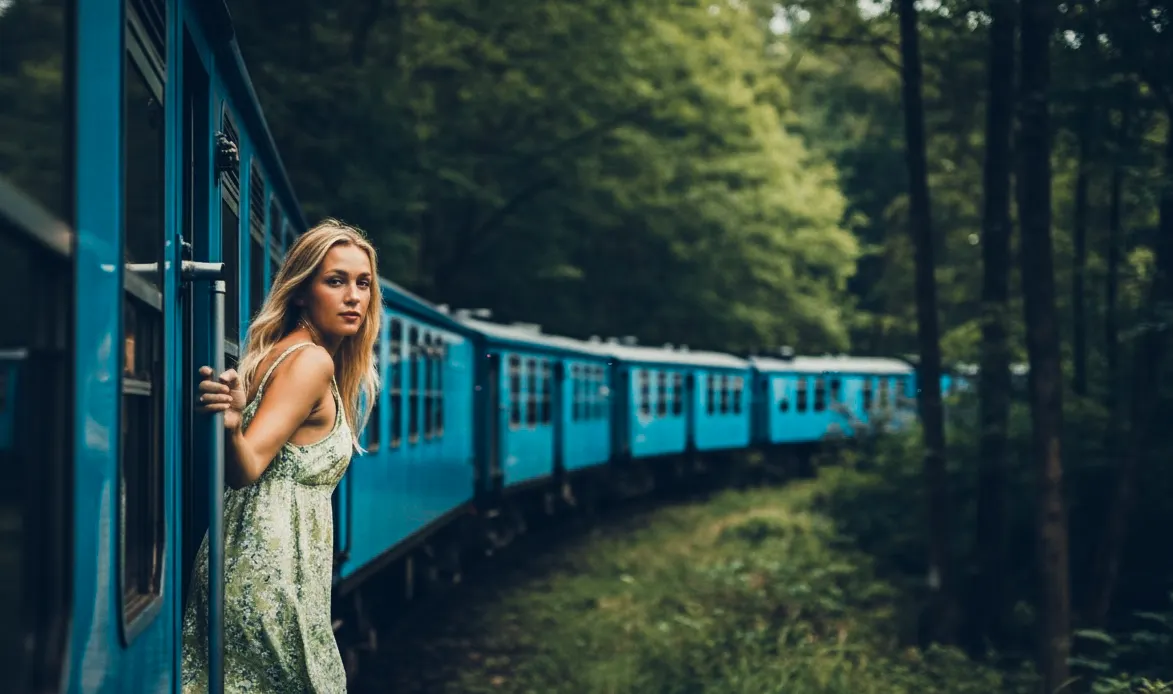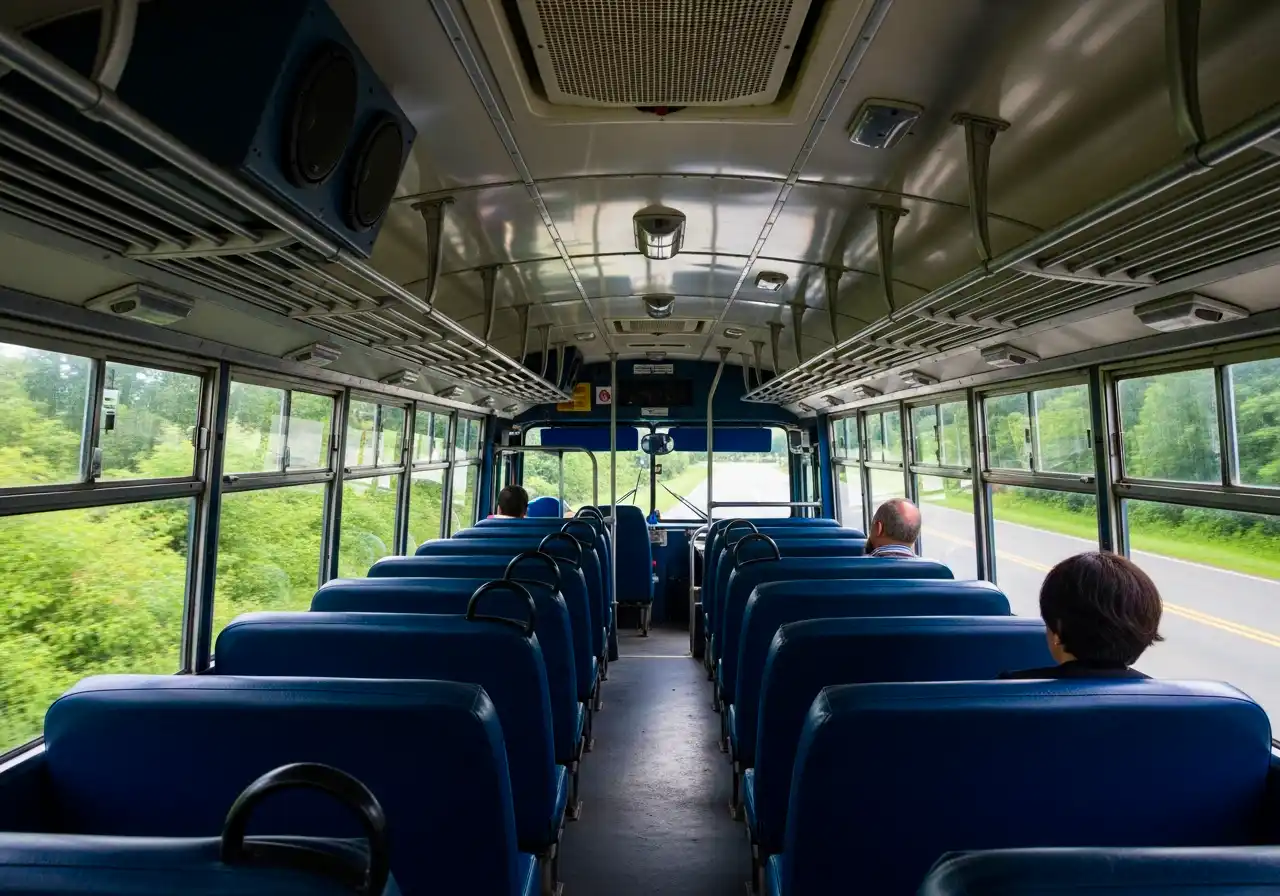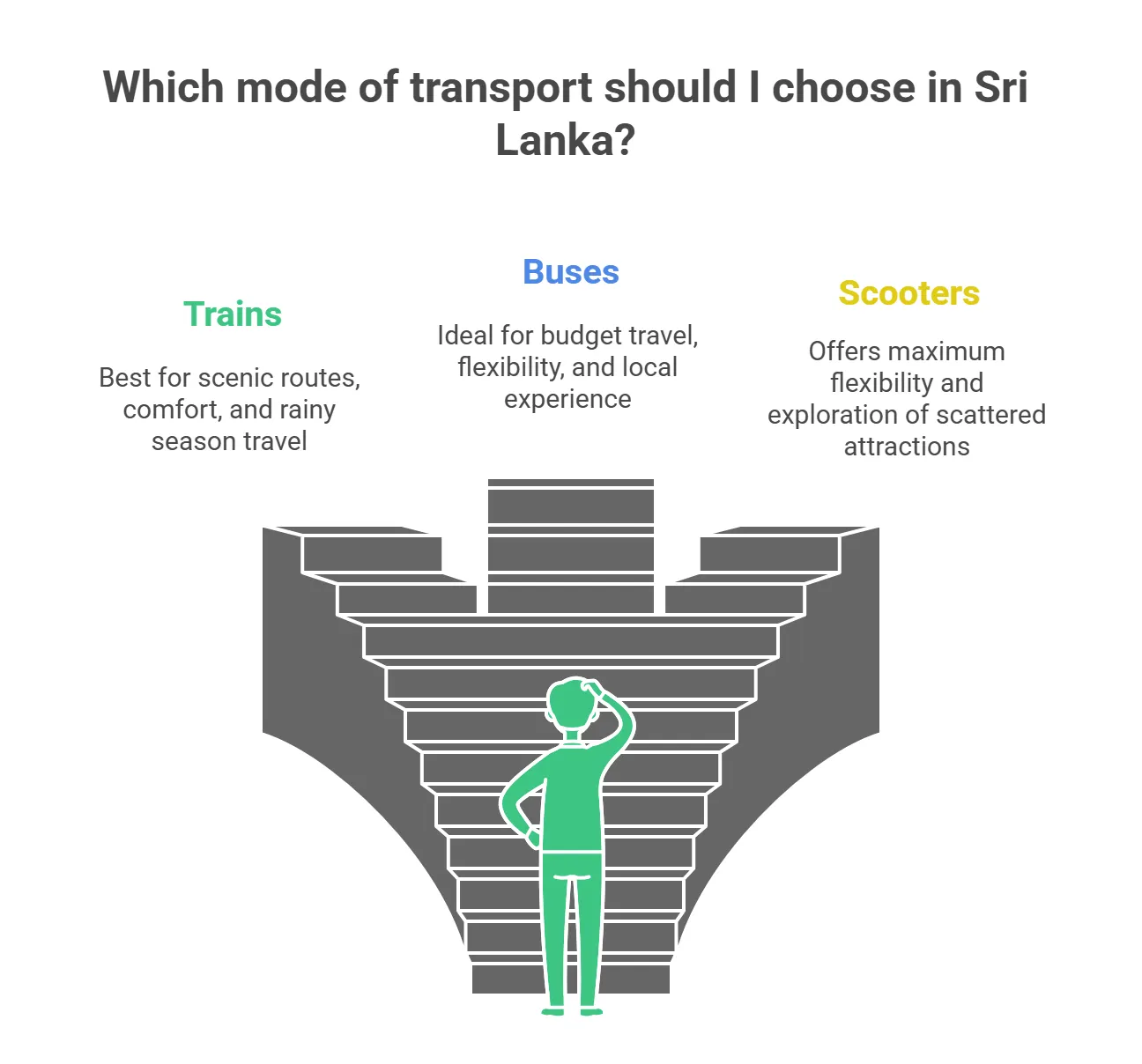Traveling Sri Lanka by Train, Bus, and Scooter: Which Is Best?
 https://res.cloudinary.com/daknktzcc/image/upload/v1762508727/Train_Bus_Scooter_uug8hy.webp?height=700&width=800
https://res.cloudinary.com/daknktzcc/image/upload/v1762508727/Train_Bus_Scooter_uug8hy.webp?height=700&width=800Think about that you're perched on the edge of an open train door, legs dangling into the breeze, watching emerald tea plantations blur past like a watercolor painting. Or maybe you're white-knuckling the handlebar of a scooter as a bus careens past, horn blaring, while monkeys scatter from the roadside. Welcome to Sri Lanka transportation, where getting from point A to point B isn't just travel—it's the adventure itself.
I've spent months crisscrossing this teardrop-shaped island, and here's what nobody tells you: choosing between trains, buses, and scooters in Sri Lanka isn't about finding the "best" option. It's about matching your transport to your vibe, your budget, and honestly, your tolerance for chaos. Some days you'll want the romance of a slow-moving train cutting through mist-covered mountains. Other days, you'll need the raw efficiency of a bus that stops for absolutely nobody. And then there are those perfect mornings when only the freedom of two wheels will do.
Let me break down what seven months of trial, error, and occasional mild terror taught me about getting around Sri Lanka.
The Sri Lanka Train Travel Experience: Romance Meets Reality

There's a reason every Instagram influencer in Sri Lanka posts that iconic shot hanging from a train door. The Sri Lanka railway scenic routes, particularly the Kandy to Ella stretch, deliver views that make you understand why people use the word "breathtaking" unironically. But here's what those photos don't show: the guy selling lottery tickets squeezing past you, the family of four sharing a seat meant for two, and the very real possibility of arriving three hours late.
When Trains Actually Make Sense
I'll be straight with you. Trains in Sri Lanka aren't about efficiency. They're about the journey becoming the destination. The network connects major cities and the hill country beautifully, but if you're trying to reach a beach town on the south coast in a hurry, you'll be disappointed.
The main routes worth considering:
- Colombo to Kandy: Your introduction to Sri Lankan rail, winding through countryside and small villages
- Kandy to Ella: The holy grail of train journeys, climbing through tea country with views that'll make your jaw drop
- Colombo to Galle: Coastal route hugging the Indian Ocean, perfect for sunset rides
Here's the thing about booking: Popular routes sell out fast. I learned this the hard way when I tried to book Kandy to Ella tickets two days in advance during Christmas week. Epic fail. You need to book reserved seats 2-3 weeks ahead for peak season (December through April). The Sri Lanka Railways website is... let's call it "temperamental." Many travelers use third-party booking sites or ask their guesthouse to help.
The Real Cost Breakdown
| Class | Price Range | Comfort Level | Booking Difficulty |
|---|---|---|---|
| First Class | 300-600 LKR ($0.90-$1.80) | Air-conditioned, guaranteed seat | Must book weeks ahead |
| Second Class Reserved | 150-400 LKR ($0.45-$1.20) | Decent seat, fan only | Book 1-2 weeks ahead |
| Third Class | 50-150 LKR ($0.15-$0.45) | Standing room probable | Show up and pray |
Pro tip from someone who's done both: Second class reserved hits the sweet spot. First class seals you away from the experience, while third class is romantic for about twenty minutes before your feet go numb from standing.
The Brutal Truth About Sri Lankan Rail
Trains are slow. Really slow. That three-hour journey? It'll take five. Maybe six if there's a breakdown, which happens more often than you'd think. But here's what I realized around month three: I stopped caring. There's something meditative about the gentle sway, the chai seller's rhythmic call, watching village life unfold through open windows.

Just don't plan tight connections. Ever. I once missed an entire day's plans because our train decided to take an unscheduled two-hour break at a random station. The conductor shrugged when I asked why. That's just how it goes.
The Sri Lanka Bus System: Controlled Chaos at Its Finest
If trains are the romantic option, buses are the reality check. The Sri Lanka bus system is extensive, cheap, and operates on a logic I'm still trying to decode. Government-run red SLTB buses chug along every route imaginable, while private buses zoom past them like caffeinated rabbits.
Decoding the Bus Hierarchy
Government Buses (SLTB)
These red buses are the backbone of public transport Sri Lanka. They're cheaper, more reliable in terms of actually stopping at every designated bus stop, and significantly less likely to try killing you with reckless driving. The downside? They're slower than my grandmother knitting a scarf. And she's been dead for ten years.
Private Buses
Faster, sometimes air-conditioned, always playing music at volumes that violate several international treaties. Private bus drivers seem to view the journey as a personal rally race. I've had religious experiences on private buses, mostly involving prayer.
Intercity Express
The fancy option—air conditioning, assigned seats, fewer stops. These intercity air conditioned buses cost slightly more but still won't break your budget. Think of them as the business class of bus travel, which is like being the tallest dwarf.
The Real Cost of Bus Travel
Here's why buses remain the cheapest way travel Sri Lanka:
| Route Type | Cost | Duration Example | Comfort Rating |
|---|---|---|---|
| City bus | 50-100 LKR ($0.15-$0.30) | Colombo to Kandy: 3-4 hours | 2/5 |
| Intercity normal | 100-500 LKR ($0.30-$1.50) | Colombo to Galle: 2-3 hours | 3/5 |
| Intercity A/C | 300-1,500 LKR ($0.90-$4.50) | Long routes: Variable | 4/5 |
Compare that to private transportation, and you'll see why backpackers practically live on buses. I once traveled from Colombo to Arugam Bay for less than the cost of a fancy coffee back home.
Surviving the Bus Experience
Look, I'm not going to sugarcoat this. Bus travel in Sri Lanka tests your patience, your spine, and occasionally your lunch's commitment to staying down. But it's authentic, it connects you to local life, and you'll have stories that beat any polished hotel experience.
Things I wish I'd known before my first bus ride:
- Sit on the left side if possible—less sun
- Front seats are bumpier but give you a view of the impending doom
- Keep small bills ready; conductors get cranky with large notes
- Motion sickness meds are your friend
- That "chicken bus" nickname? Sometimes literal

The Sri Lanka bus vs train debate really comes down to this: Trains offer comfort and views; buses offer frequency and reach. Many destinations simply aren't accessible by train, making buses your only public option.
Scooter Rental Sri Lanka: Freedom (and Fear) on Two Wheels
Nothing—and I mean nothing—compares to the freedom of having your own wheels. That hidden beach? Yours. That unmarked temple in the hills? No problem. That near-death experience with an oncoming truck? Also yours, unfortunately.
The Legal Side Nobody Talks About
Here's where most blogs gloss over reality. To legally rent and ride a scooter over 49cc in Sri Lanka, you need:
- A valid international driving permit (IDP) from your home country
- A Sri Lanka Recognition Permit from the Department of Motor Traffic
Can you rent without these? Yes. Guesthouses and rental shops will happily take your money and hand over keys. Should you? That's between you and your insurance company, who will definitely not cover you if something goes wrong without proper documentation.
The Recognition Permit process involves visiting the Motor Traffic Department in Colombo or regional offices, presenting your IDP, paying a fee (around $25-35), and waiting. Some travelers skip this. Those same travelers sometimes end up with hefty fines or, worse, stuck with medical bills insurance won't touch.
The Real Cost Analysis
Scooter rentals typically cost 6-10 USD per day, making them economical for solo travelers or couples. But factor in:
- Gas: ~500-800 LKR per day depending on distance
- Parking: Usually free, sometimes 50-100 LKR
- Helmet rental: Sometimes included, sometimes extra
- Insurance: Verify what's actually covered
Monthly Cost Comparison Table:
| Transport Mode | Daily Cost | Flexibility | Best For |
|---|---|---|---|
| Scooter | $8-12 | Maximum | Independent explorers |
| Public bus | $1-3 | Low | Budget travelers |
| Train | $2-5 | Medium | Scenic route lovers |
| Tuk-tuk (chartered) | $30-50 | High | Groups, families |
| Private car/driver | $50-80 | Maximum | Comfort seekers |
Scooter Driving Safety Sri Lanka: Real Talk

I'm going to be honest because I care about you not becoming a statistic. Sri Lanka has one of the highest road fatality rates in South Asia. Traffic is chaotic, rules are suggestions, and buses drive like they're auditioning for Fast & Furious: Colombo Drift.
Things that will terrify you:
- Driving on the left (if you're from a right-side country)
- Buses that view road sharing as a sign of weakness
- Tuk-tuks that materialize from alternate dimensions
- Dogs with a death wish
- Roads that go from highway to pothole apocalypse in 100 meters
- Zero street lighting in rural areas
Things that help:
- Mandatory helmets (actually wear them properly)
- Avoiding night driving religiously
- Defensive driving taken to paranoid extremes
- Assuming nobody sees you, ever
- Going slower than you think necessary
I've met travelers who loved every second of scooter freedom. I've also met travelers in hospital beds. The difference? Usually speed, attention, and a healthy respect for just how different the driving culture is.
The Best Transport Option Tourists Sri Lanka Should Choose
Alright, let's cut through the noise. After spending serious time testing every option, here's my breakdown:
Choose Trains When:
- You're doing the Kandy to Ella route (non-negotiable)
- You have time to spare and enjoy slow travel
- You want those Instagram-worthy views
- You're traveling during rainy season and roads are sketchy
- You value comfort over speed
Choose Buses When:
- You're on a tight budget
- Your destination isn't on a rail line
- You need frequency and flexibility
- You're okay with controlled chaos
- You want to experience local life unfiltered
Choose Scooters When:
- You have proper licensing and insurance
- You're confident handling chaotic traffic
- You want maximum flexibility
- You're exploring areas with scattered attractions
- You're comfortable with mechanical issues and navigation challenges

The Hybrid Approach (My Actual Recommendation)
Here's what I actually did after figuring out the system: Mix everything. I took trains for scenic routes and long distances where they made sense. Buses for filling in gaps and reaching places trains don't go. Scooters for 3-5 day stretches in specific regions like the south coast or the cultural triangle.
For example:
- Colombo to Kandy: Train (scenic, comfortable)
- Kandy to Ella: Train (the famous route)
- Ella to Mirissa: Bus (no train option)
- Mirissa area: Rented scooter for 4 days (beach hopping freedom)
- Mirissa to Galle: Bus
- Galle Fort area: Walking and Pick Me rides
Pick Me Uber Sri Lanka: The Middle Ground
Let's talk about the savior of short-distance travel. Pick Me (the local Uber equivalent) operates throughout Sri Lanka and is genuinely excellent. I used it constantly in cities and for point-to-point trips where buses would be inconvenient.
The app works for:
- Tuk-tuks (most common)
- Regular taxis
- Bikes (motorcycle taxis)
Prices are transparent, drivers are rated, and you avoid the haggling dance. A typical tuk-tuk ride across Colombo runs 200-500 LKR ($0.60-$1.50). Not as cheap as a bus, but worth it when you're dragging luggage or it's scorching hot.
Uber also operates but has less coverage. Pick Me is the local champion.
Solo Travel Transportation Sri Lanka Budget: Making It Work

As a solo traveler, I tested every budget scenario. Here's what actually works:
Ultra-Budget (Under $5/day)
- Public buses exclusively
- Third class trains
- Walking
- Reality: Doable but exhausting
Moderate Budget ($10-15/day)
- Mix of buses and reserved train seats
- Occasional tuk-tuks for short hops
- Pick Me for convenience
- Reality: The sweet spot for most travelers
Comfort Budget ($20-30/day)
- Intercity A/C buses
- First/second class trains
- Regular Pick Me use
- Occasional private drivers for full-day trips
- Reality: Significantly easier experience
The Dark Horse: Shared Shuttles
Nobody talks enough about shared shuttle services connecting major tourist spots. Companies run comfortable vans between popular destinations, offering a middle ground between public buses and private cars. They're more expensive than buses (usually $10-20 per trip) but save time and sanity.
Practical Tips Nobody Mentions
After months of transportation trial and error, here are the details that make a difference:
Booking and Planning
- Book Kandy to Ella train at least 3 weeks ahead during peak season
- Check the SLTB bus schedule online, but trust it about as far as you can throw a bus
- Download maps offline—data coverage is patchy outside cities
- Learn basic Sinhala numbers for bus routes
- Keep small change for buses; conductors hate breaking large bills
Safety and Comfort
- Always carry toilet paper (bus station facilities are... basic)
- Pack snacks and water for long journeys
- Wet wipes are your best friend
- Motion sickness tablets before bus journeys through hill country
- Keep valuables in front pockets or secure bags
Money Matters
- ATMs are widely available, but carry cash for rural areas
- Credit cards rarely work for transport
- Budget about 20% more than quoted prices for unexpected costs
- Insurance for scooter rental is worth every rupee
The Verdict: Which is Actually Best?
Here's the truth bomb: There is no "best" option. The question isn't which transport mode is superior—it's which one matches your specific situation.
Trains win for: Scenic value, comfort, and that intangible magic of rail travel in Asia. They're slower than molasses but worth every delayed minute on the right routes.
Buses win for: Coverage, frequency, and budget. They'll get you anywhere for pocket change, even if the journey might test your patience and your spine's structural integrity.
Scooters win for: Freedom and flexibility. Nothing beats exploring at your own pace, even if that pace sometimes involves white-knuckled terror.
My final recommendation? Start with trains and buses to get a feel for the country. Once you're comfortable with the driving culture and chaos level, consider a scooter for specific regions. Use Pick Me liberally in cities. Don't be dogmatic about one mode.
The magic of Sri Lanka transportation isn't in finding the perfect option—it's in embracing the imperfect adventure each one offers. Some of my best memories happened because a bus broke down, a train was five hours late, or I got completely lost on a scooter and stumbled onto a hidden waterfall.
Your Next Move
So here's what I want you to do: Stop overthinking it. Book that train ticket for Kandy to Ella before they sell out. Save Pick Me app to your phone. Research scooter rental options if you're feeling brave. But most importantly, stay flexible. The transportation that seems most frustrating in the moment often delivers the best stories later.
Sri Lanka's not about getting from A to B efficiently—it's about everything that happens between those points. The lady selling hoppers from a basket on the train. The bus conductor who teaches you Sinhala numbers. The moment you finally master the art of leaning into scooter turns on mountain roads.
Whatever you choose, you're in for an adventure. Pack patience, keep your sense of humor close, and remember: In Sri Lanka, the journey really is the destination. Usually because the journey takes twice as long as you planned.
Safe travels, and may your buses be on time, your trains have seats, and your scooter rental actually include working brakes.
Share this article

Tharindu Madhusanka
Travel blogger, photographer, and lifelong explorer of Sri Lanka’s hidden gems.
View all posts



